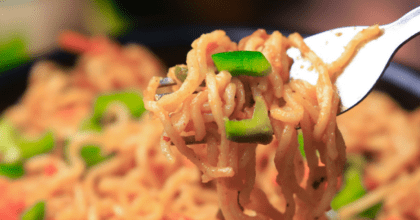Packaged spices and seasonings are gaining traction in India, with Millennials as a key consumer target
The spice market in India is dominated by the unorganized sector, with 56% of Indians stating that they currently purchase unpackaged single spices and 44% purchasing unpackaged masala mixes, according to new research from Mintel*. However, factors such as convenience, competitive pricing and rapid urbanization are propelling consumers towards the packaged format of spices and masala mixes.
Nearly a quarter of Indians (22%) state that they currently buy unpackaged single spices and intend to switch to packaged formats in the next 12 months, and this goes further to 27% for masala mixes. The report indicates a potential for brands to enter/expand the market by swaying the current unpackaged purchasers to buy packaged formats.
Younger Millennials are a key consumer target
The future intent to move from unpackaged to the packaged format of spices and masala mixes is observed the most among younger millennials aged 26-32.
Tulsi Joshi, Senior Food & Drink Analyst, Mintel Reports India, said:
“Our research shows that nearly three in 10 (28%) Younger Millennials who currently buy unpackaged single spices intend to switch to packaged ones in the next 12 months. This future intent is observed more in masala mixes, with over a third (35%) of Younger Millennials who currently buy unpackaged masala mixes intending to switch to packaged ones in the next 12 months. This makes them a key segment and a low-lying fruit for market expansion that brands must prioritise.
“On the other hand, there also exists a cohort who currently buys packaged format but intends to switch to the unpackaged format. This means brands will have to divide and conquer the spices and masala mixes market, i.e. prioritise, retain, upgrade or nudge the consumers according to their current purchase and future intent. For example, brands can play up on value-for-money proposition to retain the price-conscious consumers who intend to switch from packaged to unpackaged format while upgrading the loyal packaged consumers with organic/all-natural spices and masala mixes.”
Packaged spices loyalists are open to paying more for organic options
Rising consumer awareness and concern about the negative health impact of synthetic additives in spices are augmenting the demand for natural and organic spices. Over three-fourths (79%) of metro-dwelling Indians agree that unpackaged/loose spices are adulterated (vs 72% of the total sample). This research suggests that organic variants can find a niche among packaged single spices consumers who intend to stick to packaged formats in the near future.
“While there is demand for organic spices, there is also a limited understanding of the term ‘organic’. More than three-quarters (78%) of packaged spices loyalists agree that ‘organic’ spices are the same as ‘natural’ spices. Thus, it is imperative that brands educate consumers when introducing their organic variants.
“A majority of consumers (82%) state that they are willing to pay more for organic spices, masala mixes and/or seasonings. However, it will be important to communicate what organic means and why it is more expensive for market expansion,” Joshi continued.
Single-sachet masala mixes are poised for growth
Mintel research indicates a demand for taste-enhancing masala mixes that can be used as seasonings, with the majority of consumers (81%) agreeing that limited varieties are available in this category.
“Single sachet packaged formats can be an ideal route for masala mixes brands that wish to enter the seasonings market. Our research shows the availability of international varieties is the biggest purchasing motivator for packaged seasonings consumers (46%).”
“We see that packaged spices and seasonings have enormous growth potential in the Indian market. Brands can learn from categories like atta on how to convert unpackaged consumers into packaged ones. Atta brands ensured that the price-value equation was right and convinced consumers to buy packaged atta that was more hygienic, healthier and cleaner but less expensive than chakki atta,” Joshi concluded.
*Report definitions
‘Single spices‘ refer to spices that are not blended with any other spices. For the purpose of this report, we have excluded whole spices. For example, red chilli, turmeric, coriander, jeera in powder format.
‘Masala mixes‘ refer to blended spices – when more than one spice are blended together. For example, garam masala, kitchen king, biryani masala, pani puri masala.
‘Seasonings‘ refer to spices and herbs that are usually used to add taste and garnishing to cooked food. For the purpose of this Report, we have excluded salt and salt variants. For example, oregano, chilli flakes on pizza or pasta, pepper on boiled vegetables, chaat masala on fruit salad.
Mintel Reports India, Spices, Masala Mixes and Seasonings, 2022 report is available here.
Additional research on Indian consumer attitudes towards spices, masala mixes and seasonings and interviews with the analyst are available upon request from the Mintel Press Office. For those interested in purchasing the full report, please visit the Mintel Store.

Tulsi is Mintel’s Senior Food & Drink Analyst based in Mumbai. She is responsible for analysing and providing insights on India’s food and drink market.
-
Mintel LeapMintel Leap is a revolutionary new AI-powered platform that will transform your research process....Book a demo






































